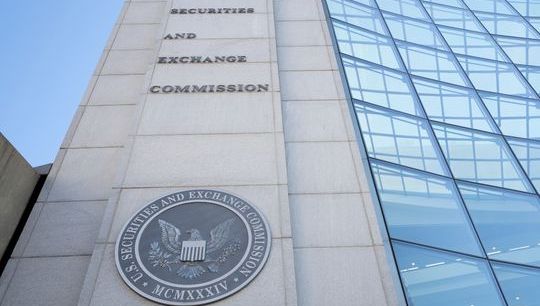Securitisation
Overview:
EU regulatory basis
In 2018, two EU Regulations setting out a new framework for European securitisation entered into force.
- Regulation (EU) 2017/2402 (the Securitisation Regulation) which introduced a new framework for simple, transparent and standardised (STS) securitisations.
- Regulation (EU) 2017/2401 (the Securitisation Prudential Regulation, or SPR) replaces certain provisions of the Capital Requirements Regulation (CRR) and sets out the framework under which certain institutional investors can benefit potentially from more favourable regulatory capital treatment for STS securitisation exposures.
UK regulatory basis
- The EU Securitisation Regulation has been amended by the Securitisation (Amendment) (EU Exit) Regulations 2019 and as so amended is entitled the 'UK Securitisation Regulation' below.
Recent work:
Capital Markets Union – High-Level Forum recommendations
The ACC welcomes the initiative of the CMU HLF to make the securitisation framework more efficient and better aligned with established industry practices, as part of the 17 interconnected recommendations issued in the final report. The ACC supports the seven key recommendations proposed by the HLF, in particular the recommendation regarding reducing the cost of SME financing and differentiating between disclosure and due diligence requirements for public and private securitisations.
CLOs and STS certification
Collateral Loan Obligations (CLOs) fall within the remit of the Securitisation Regulation, but they are not eligible for STS certification as they are deemed to be ‘actively managed’ for the purposes of the Regulation.
The exclusion of CLOs from the STS framework acts as a brake on the provision of finance to European borrowers, while also limiting the ability of banks to de-leverage their balance sheets. The ACC and AIMA would urge policymakers to amend the STS criteria to encompass transactions where active management can only occur within the portfolio criteria established by the CLO manager and their investors. This would align with the Securitisation Regulation’s existing requirements for new exposures into revolving pools to meet the initial eligibility criteria and for proven servicer experience level.
ESAs Joint Opinion on the jurisdiction scope of the Securitisation Regulation
The ESAs Joint Opinion has been issued to identify areas of uncertainty which exist regarding scope/interpretation of the Securitisation Regulation The Opinion calls for the European Commission to either issue interpretative guidance or amend the Regulation.
The ACC and AIMA submitted a position on the ESAs opinion to the ESAs and other stakeholders.
2021 European Commission consultation on the EU Securitisation Framework
The European Commission published a consultation on the EU Securitisation Framework, covering the following key areas:
- The general impact of the regulation;
- Private securitisations;
- Due diligence and jurisdictional scope;
- The need for an simple, transparent and standardised (STS) equivalence regime;
- ESG disclosure;
- The potential role of limited licensed banks performing the functions of securitisation special purpose entities (SSPEs); and
- Supervision.
The ACC and AIMA have responded to this consultation. Members can review our response here.
Call for evidence on the UK Securitisation Regulation
The UK Treasury has published a call for evidence on the Securitisation Regulation seeking views on the Regulation and how the UK market compares to other countries.
The ACC and AIMA have submitted a response to this call for evidence providing comments on the following key areas:
- Scope of the regulation;
- Simple, Transparent and Standardised (STS) cetification for Collateralised Loan Obligations;
- ESG and securitsations;
- Disclosure of private securitisations; and
- Risk retention modalities.
Members can review our response here.
Following the consultation, the UK Treasury has published its review of the Securitisation Regulation. The report provides the UK Government position on the functioning of the Securitisation market and the role of the Securitisation Regulation. Key takeaways on the points covered in our response include:
- Functioning of Securitisation market: Securitisation Regulation remains an important element to the functioning regulation of securitisation in the UK and HM Treasury does not see the need to introduce macroprudential measures or other additional regulatory enhancements for both the primary credit lending market and the securitisation market at present
- Institutional investor definition: HMT will be amending the definition of institutional investor to take certain unauthorised, non-UK AIFMs out of scope of the due diligence requirements but does not think it’s appropriate to exclude sub-threshold AIFMs. It is not specified when this will take place other than stating that this will be taken forward at the appropriate time
- Disclosures for private securitisations: Little benefit to extending the public disclosure requirements (i.e. reporting to an SR and filling in two additional templates) to private securitisations
- Distinguishing between public and private securitisations solely on the basis of whether a prospectus is required under section 85 FSMA may not always be appropriate.
- HM Treasury intends to work with the regulators to consider where changes to the current framework may be appropriate
- Any changes to the definition of public and private securitisation, and to disclosure requirements, would be developed with industry input via consultation.
- Environmental Disclosure Requirements:
- Environmental information important for securitisation investors but acknowledge difficulties with the availability and standardisation of such data
- HM Treasury and the regulators will consider whether it is appropriate to extend the Sec Reg’s environmental information disclosure requirements, as raised in Article 46(2)(f) but any additional information required by the Sec Reg’s disclosure templates likely to be subject to availability, as is the case for the Regulation’s current requirements.
- Any changes will also take account of developments in the regulation of green finance disclosure that will soon be implemented (e.g. the Sustainability Disclosure Requirements (SDR)) and balance between providing information and not overburdening securitisation manufacturers
- Not appropriate for green securitisations to be given beneficial capital treatment at present
- Risk retention:
- Framework broadly works as intended and no plans to restrict or adapt the existing modalities at this time
- HM Treasury, and the PRA through their Technical 23 Standards process, will review specific areas, including:
- Transferring the risk retention manager;
- Allowing eligible servicers to fulfil risk retention requirements in NPE securitisations; and
- Calculation of the risk retention on the transaction price for NPE securitisations.
- The PRA intends to prioritise work on the risk retention Technical Standards in 2022.
- HM Treasury can see potential benefits to L-shaped risk retention and including the excess spread as an element of risk retention. However, further work with the regulators is required on this
- STS equivalence:
- An STS equivalence regime is desirable and should be introduced at the appropriate time
- Any new equivalence regime will be consistent with the principles and processes set out in the November 2020 Guidance Document for the UK’s Equivalence Framework for Financial Services
- HM Treasury not minded to remove requirement for originators and sponsors involved in an STS securitisation to be established in the UK under Article 18(2).
- SSPEs
- HM Treasury agrees with respondents that the current system of SSPEs works well and does not see a reason to replace it with a system of LLBs
- Jurisdictional scope
- Article 5(1)(f) could helpfully be clarified further and to support the ability for UK investors to invest in overseas securitisations that meet certain conditions
- HM Treasury and the regulators will, as a priority, seek to clarify what kind of disclosures are required for securitisations where the manufacturers are established outside the UK.
- This will balance pragmatism with high disclosure standards like those in the UK
EBA public consultation on draft RTS specifying requirements for originators, sponsors, original lenders and servicers relating to risk retention
The European Banking Authority (EBA) launched a public consultation on draft Regulatory Technical Standards (RTS) specifying the requirements for originators, sponsors, original lenders and servicers related to risk retention, in line with the Securitisation Regulation.
The RTS carry over a substantial amount of provisions from the EBA RTS on risk retention submitted to the European Commission in July 2018 but addresses a number of new provisions, such as:
- Specifying modalities of risk retention in traditional NPE securitisations;
- Specifying requirements for the expertise of servicers acting as a retainers in NPE securitisations;
- Impact of fees payable to the retainer on risk retention;
- Risk retention in re-securitisations or in securitisations of own issued debt instruments; and
- Clarification on the treatment of synthetic excess spread.
The ACC and AIMA have submitted a response to this consultation. Members can review our response here.
European Commission report on Securitisation Regulation
In 2022, the European Commission published its report on the review of the Securitisation Regulation, concluding that the current framework works well, and only putting forward suggestions to improve requirements around disclosure templates.
STS for on balance sheet securitisations
In April 2023, the EBA opened a consultation on draft guidelines for simple, transparent and standardised (STS) criteria for on-balance-sheet securitisations.
ESMA consultation on securitisation disclosure templates
In December 2023, ESMA released a consultation paper outlining options for potential changes to the current securitisation disclosure framework.
AIMA and the ACC will submit a response in due course.
FCA consultation on securitisation regulation
In August 2023, the FCA released a consultation paper (CP) outlining proposed amendments to the UK Securitisation Regulation (UK SR).
AIMA responded in November 2023.
UK Securitisation Regulations 2024
In January 2024, HM Treasury published the UK Securitisation Regulations 2024. This Statutory Instrument (SI) creates a new framework within which the FCA and the PRA can make rules in relation to securitisation
2024 European Commission consultation on the securitisation regulatory framework
On 9 October, the European Commission (EC) published its targeted consultation on securitisation, which comes after many calls for reform including by the Eurogroup, the European Council and the Noyer, Letta and Draghi reports.
The EC sought to gather input from stakeholders on the current securitisation framework to inform the legislative proposal expected for summer 2025. The consultation followed a holistic approach and was comprised of 175 questions on a wide range of issues, including:
- Effectiveness of the current securitisation framework: This section considers indicators such as the revival of a safer market, the reduction of investor stigma and the improvement of financing of the EU economy.
- Impact on SMEs: This section seeks input on the barriers to securitise SMEs loans and on how securitisation can contribute to the access to finance for SMEs.
- Scope of application of the current Regulation: This section seeks input on the jurisdictional scope of the Regulation and the legal definitions of “securitisation transaction” and “sponsor”, including considering AIFMs as sponsors. The EC is also considering whether to expand the definition of public securitisations.
- Due diligence and transparency requirements: This section seeks quantitative evidence on costs derived from compliance with these requirements.
- Supervision): The EC states that supervision should be streamlined and improved in the EU to enhance consistency, coordination and a level playing field.
- STS standard: The EC seeks input on the functioning of the STS standard, which it acknowledges might be too burdensome to comply with.
- Securitisation platform: Input on its potential usefulness, including a common safe asset. Questions also touch upon the establishment of guarantees.
- Prudential and liquidity risk treatment of securitisation for banks
- Prudential treatment of securitisation for insurers
- Prudential framework for pension funds
In expectation of this new effort toward reform, the ACC published a position paper on ‘Reviving the EU securitisation market’ in July 2024.
The ACC and AIMA submitted a response to the European Commission’s (EC) targeted consultation on the functioning of the EU securitisation framework.
Our response echoed the points of the ACC’s position paper and highlighted the value of the securitisation market to the real economy and to mobilise capital to invest in SME growth and key strategic areas.
The key focus of the response was:
- Introducing principles-based and proportionate due diligence and transparency requirements for sophisticated investors and issuers of securitisations: Detailed due diligence obligations for institutional investors add little value, yet the associated compliance risks are a significant barrier to their investment in securitisation products.
- More risk-based capital and liquidity requirements for prudentially regulated investors: Capital requirements for insurers have significantly reduced their incentives to invest via securitisations, despite the fact that the asset profile of many securitised products is a natural fit for insurance liabilities.
- Allowing AIFMs to sponsor securitisations: This would broaden the population of financial institutions participating in the production and distribution of securitisations. AIFMs and the AIFs they manage are currently prohibited from acting as sponsors of securitisations under the Securitisation Regulation which envisaged this only being performed by a credit institution or a MiFID licensed entity.
Additionally, our response included:
- Simplifying and broadening the scope of the STS labels: Actively managed CLOs should be permitted to qualify as Simple, Transparent and Standardised.
- Narrowing the scope of the definition of securitisation to enable the green and digital transitions: Any type of transaction that involves the tranching of risk, however simple, might fall within the scope of the Securitisation Regulation, which captures transactions that should otherwise not be considered as securitisations, either because they are simple products or because they play a strategic role in mobilising private capital for EU social, economic and political objectives.
- Allowing sophisticated investors to invest in non-EU securitisation markets: EU investors are prohibited from investing in some of the largest and most liquid US securitisation products, specifically US open-market CLOs. This restricts EU investors and those captured under the definition of institutional investor and hampers their competitiveness in relation to their global peers.
Upcoming actions:
A legislative proposal is expected in the European Union by Summer 2025. The European supervisory authorities are also expected to publish their own report on securitisation reform in Q4 2024 or Q1 2025.
The FCA is working on options to amend securitisation disclosure templates in two areas:
- The use of no data responses to address fields where manufacturers face difficulties completing the prescribed securitisation disclosure templates.
- Where the disclosure templates are not sufficiently tailored to the commercial realities of synthetic securitisations.
The FCA is working on improving data collection for the CLO market and might conduct data gathering exercises.
(Last updated: 11 December 2024)







